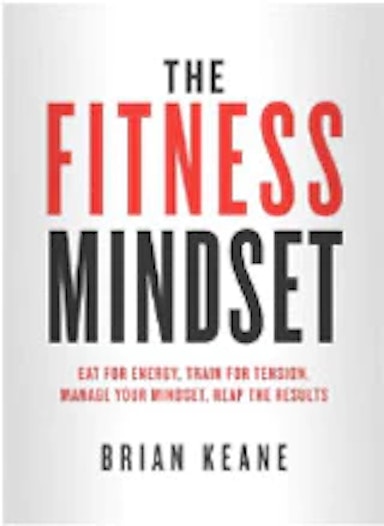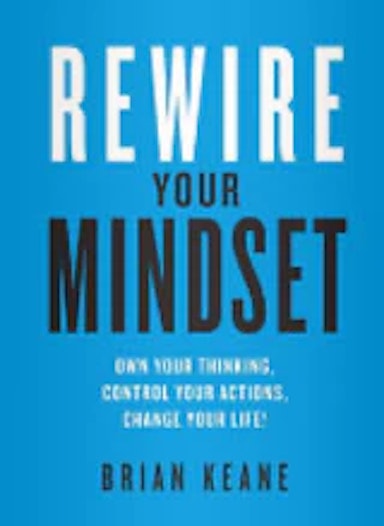Are You Busy Or Productive? – The Power Of Batching
- By Brian Keane
That one simple question has saved me more time over the past three years than any other. From personal experience, I know how easy it is to get caught up in the minutia of daily tasks: filling your calendar or adding things to your ‘to do’ list, all the while never feeling like you’re getting any closer to your end goal. If this is you, then read on.
My understanding on this shifted dramatically several years ago when I realised that there was a big difference between being busy and being productive. Being busy means you have a lot of things to do, being productive means you’re getting a lot of things done.
Over the past seven years as I’ve gone from working part time as a personal trainer (working as primary school teacher during the day) to then hiring other coaches to take people through my gym programs. Since then I’ve moved my entire business online with personalised and then scaled programs; and now most of my time spent creating content or working directly with personal trainers as a business consultant. With that, I’ve experimented with so many different tactics to try and get more done during the day. I’ve outsourced, I’ve used virtual assistants, I’ve hired staff, I’ve worked scattered 16 hour days, I’ve worked 1 hour concentrated days, I’ve tried it all. However nothing has improved my productivity like ‘batching’ my work.
The term batching is effectively putting similar tasks back to back on your calendar and doing it all in one fowl swoop. For example, in 2016, I started with batching my email replies. My business was 100% online at this stage so I started with two hours a day of emails (4-6pm) and that was it. I didn’t check emails outside of that time and if an email came in at 6:01pm, I didn’t get replied to until 4:00pm the next day. Every client I worked with knew this was the window to and a lot seemed to enjoy knowing I was on call during these times. I actually have one of the trainers I worked with using this same strategy through Whattsapp with his online business in Barcelona at the minute.
Now, this may sound like a really simple thing to do but I would be checking email on my phone at least thirty times a day. I would unlock my phone screen, go through social media for a few minutes and then click into my email before I relocked it again. I could do this three or four times an hour!
Batching email allowed me to really focus on the quality of my replies. I would switch into ‘email mode’ – whereby my phone would go off, and I focus on what I call deep work where I’m concentrating on the task at hand and nothing else. I do the same thing now when I’m writing a new book; I write for two hours in the morning with no distractions. That might not seem like a lot but try doing that for six months straight- you’d be shocked at how much you can get done with two hours a day, four days a week (I don’t write Friday, Saturday or Sundays). By the way, that goes for things other than books too: social media content, podcasts, blog posts, client calls etc. It’s about experimenting with your best creative windows and optimising those times.
Now in late 2018, I split my day into ‘creative’ and ‘reactive’ work – creative is as it sounds – creating something from nothing – writing (this blog post for example), podcasting, videos etc. and reactive is the work where I’m replying other people – emails, team meetings, consultations etc. Again I batch this. I batch my creative tasks in the morning and I batch my reactive tasks later on in the day.
The truth is its not about how long you’re working, its about how much you’re getting done in that time. For example, I had a consultation in early September with a personal trainer who was working with 25 clients a week at £20 a session, which was giving him about £500 per week. However that was just his ‘on’ time with clients. He was spending another 25+ hours on social media, creating plans and talking to people on the gym floor trying to get more leads. When he came to me, he was exhausted, frustrated and didn’t know if this was what he wanted to do anymore.
As he was already at capacity (I convinced him to stick with 25 sessions a week although he wanted to increase it to 30-35 as he thought this was the answer). By the way, the first rule when you find yourself in a hole is to stop digging. If you keep doing what you’re doing, you will keep getting what you got. In a snapshot, heres what we did. We upscaled his package (adding in a nutritional plan, new specialised training program etc.), increased his price to £30 per session (but sold in a package of 10 sessions for £300), narrowed down his social media strategy; he was working with mostly 24-31 year old so we prioritised his Instagram content and batched his time on the gym floor so he did an hour of walking the floor in the morning (between sessions) and an hour in the evening (before going home). I also got him to move his Friday sessions to Saturday (batching) so he got two days a week off instead of one – two months later in his follow up call, he’s working less, earning more and is enjoying his life again. We didn’t change anything dramatic and truthfully we just shifted his busy lifestyle to becoming that of a more productive one but you see the difference that makes.
Yes you need to work hard to get anything done but understanding that the initial movement or change is the hardest part. A rocket uses nearly 80% of all its fuel to get off the ground and the other 20% to maintain its orbit in space. Your business is the same. Whether you’re just starting on your journey as a personal trainer or you’ve hit a wall or ‘glass ceiling’ like my trainer above, the initial take off or the directional change is the hardest part.
The mindset shift of going from from being busy vs. productive can change your whole work life but it’s important that you’re not intentionally sabotaging yourself because it feels nice to be busy. This happened to me in 2015, I liked the ego stroke of telling people how busy I was and it nearly led to a nervous breakdown from working too hard. It was a very unsupportive belief system but your mess becomes your message so please learn from my mistake. Being busy is vanity, being productive is sanity.
The answer is to do things that all focus towards the end goal and then using strategies (such as batching) to help you do it more effectively. I’ll be covering this in much more detail in the ‘Time Management – Get Sh*t Done’ section of my upcoming business seminars as I can give much more context to each persons business (both Galway and Dublin are limited to 20 people for this exact reason) but the take home message is to ‘not fool yourself and you’re the easiest person to fool’ – being busy and being productive are not the same thing. Also there are three books that helped with me with particular topic (taking from the business seminar reading list that will be given on the day) but I definitely recommend checking them out if this is an area that you need to work on.
- The One Thing by Gary Kelleher
- Essentialism – Stephen Mckeown
- The 4 Hour Work Week – Tim Ferriss


